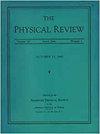Single-qubit measurement of two-qubit entanglement in generalized Werner states
引用次数: 0
Abstract
Conventional methods of measuring entanglement in a two-qubit photonic mixed state require detection of both qubits. We generalize a recently introduced method which does not require detection of both qubits, by extending it to cover a wider class of entangled states. Specifically, we present a detailed theory that shows how to measure entanglement in a family of two-qubit mixed states, obtained by generalizing Werner states, without detecting one of the qubits. Our method is interferometric and does not require any coincidence measurement or postselection. We also perform a quantitative analysis of anticipated experimental imperfections. We show that the method is resistant to a decrease in the interference visibility resulting from such imperfections.广义Werner态中双量子比特纠缠的单量子比特测量
测量双量子位光子混合态纠缠的传统方法需要检测两个量子位。我们推广了最近引入的一种不需要检测两个量子比特的方法,将其扩展到涵盖更广泛的纠缠态。具体来说,我们提出了一个详细的理论,展示了如何在不检测其中一个量子位的情况下,通过推广Werner状态获得的双量子位混合状态家族中测量纠缠。我们的方法是干涉测量,不需要任何符合测量或后选。我们还对预期的实验缺陷进行了定量分析。我们表明,该方法可以抵抗由这些缺陷导致的干扰可视性降低。
本文章由计算机程序翻译,如有差异,请以英文原文为准。
求助全文
约1分钟内获得全文
求助全文

 求助内容:
求助内容: 应助结果提醒方式:
应助结果提醒方式:


